Do you know how to set the sag on your suspension? Of course, we all know that. You jump on your bike, set the O-ring and then… “but do you stand up or sit down?” …. Hmm…
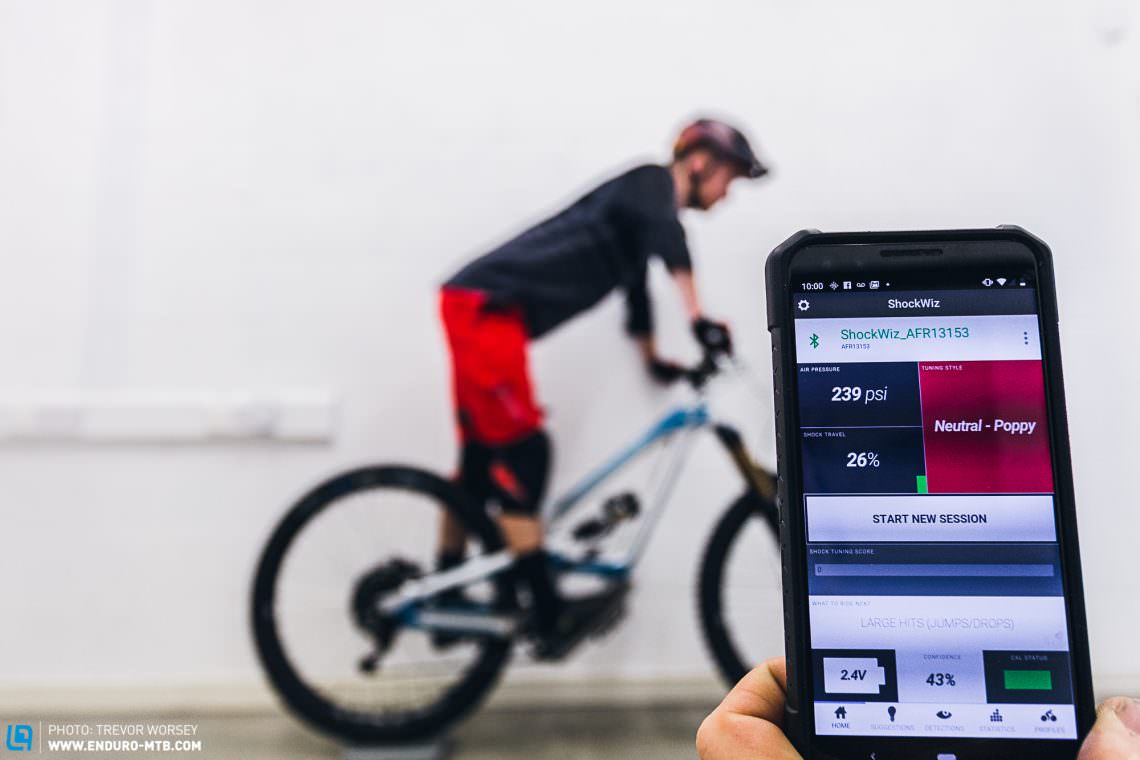
If you read our suspension setup guide, you will know how important it is to understand how much sag you are running on your suspension. But should the measurement be taken sitting down on the seat, or up in your standing ‘descending’ position? While we do know that you must stand up when measuring the sag on your fork, when it comes to the rear shock things get a little more confusing. There seems to be no hard and fast rule, even among the suspension professionals. We take a closer look at what’s happening when you sit and stand on your bike.
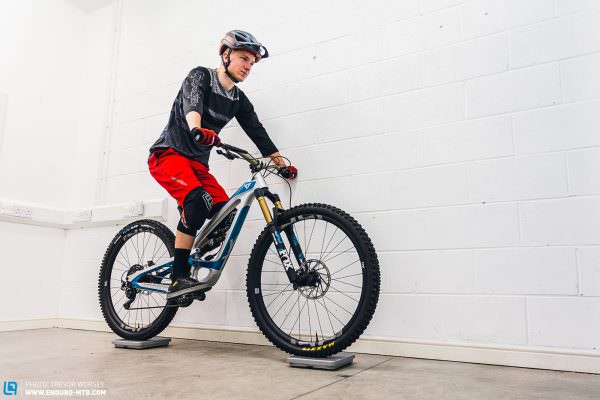

Is there a difference between sitting and standing?
So is there a difference between the amount of suspension sag when you move from sitting to standing? To find out, we placed a scale under both the front and rear wheel of a test bike and then measured how the weight of our 77 kg tester was distributed front and rear in both the sitting and standing positions.

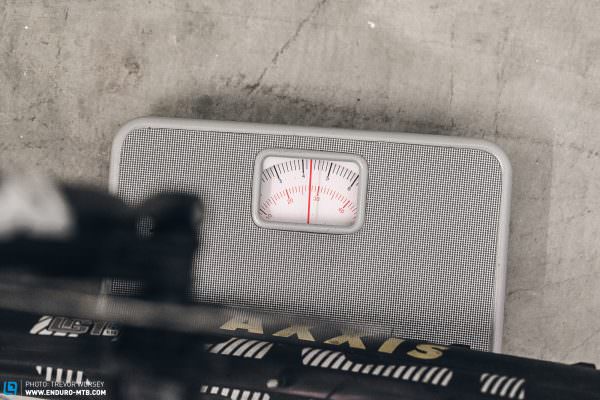
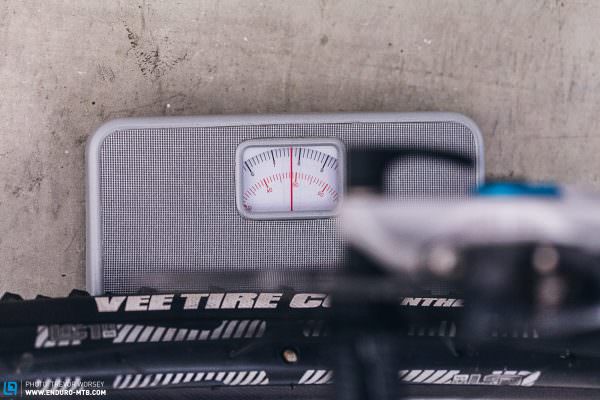
In a sitting position, the wheels were weighted 28kg on the front and 49kg on the rear, which is a 36 / 64 % distribution. The YT Capra we used as an example is a very slack bike, so we expected the front wheel to be lightly loaded in the sitting position.
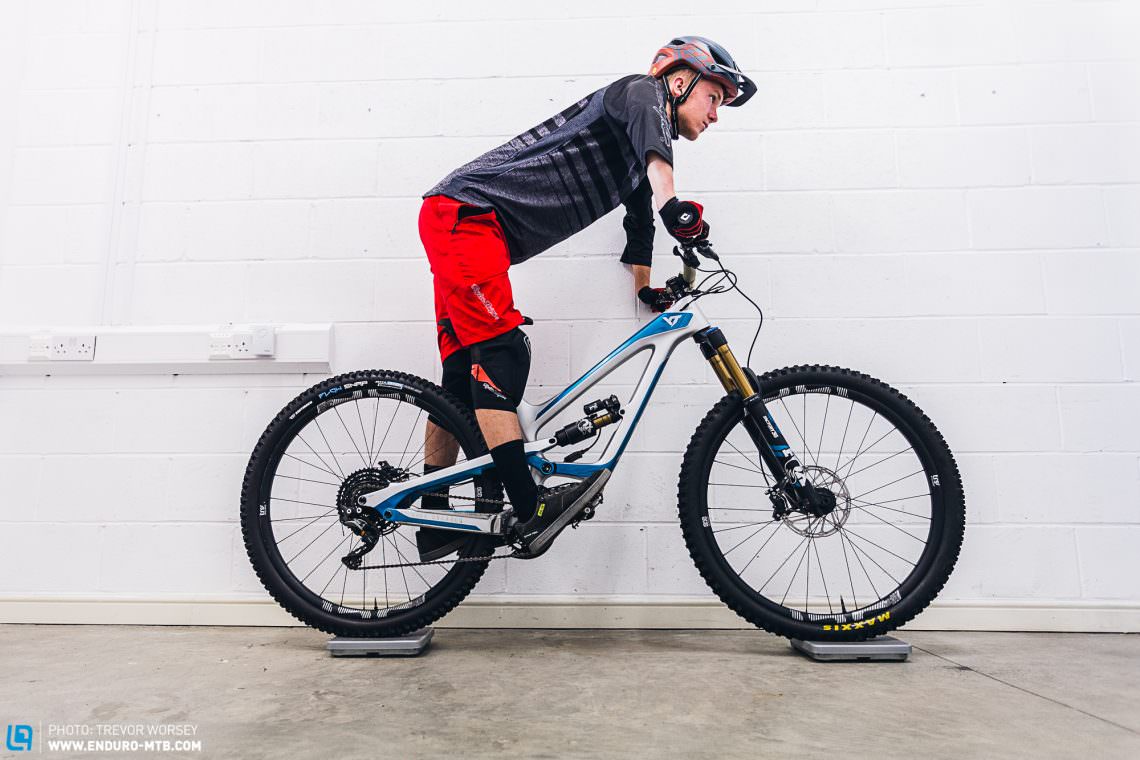

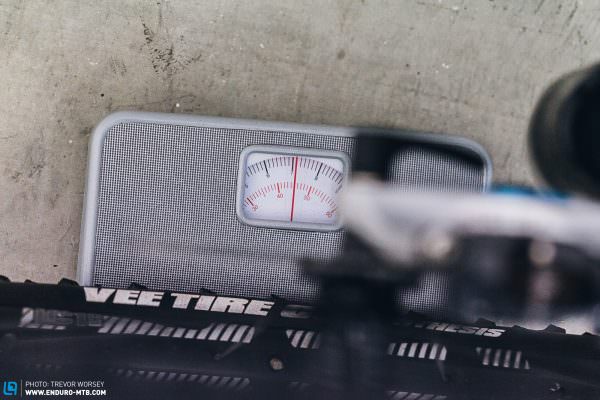
Moving into the standing position transferred an extra 4 kg over the front wheel, weighting the front wheel 32kg, leaving 45 kg on the rear and a more balanced 42 / 58 % weight distribution, but how was this affecting the sag measurement?
How does this effect SAG?
So does this weight shift affect the sag settings, and if so, how much? To find out, we optimised the rear shock sag of our test bike to 30% for our 77kg rider while in a seated position. Using a Shockwiz to aid demonstration and keeping the pressure the same, you can see that when you assume the standing position, the sag drops 4% to 26%. Therefore the measured sag will differ by around 13% while sitting and standing with the same shock spring pressure.


So should you set suspension sag sitting down or standing up?
So does it matter? In the words of suspension guru and perhaps one of the most qualified guys on the circuit, Fox’s Jordi Cortez. “It doesn’t matter how you measure sag, just that you do it. Sag isn’t an absolute. It’s a place to start and work from. What matters is that you are consistent in how you do it.” There is no right and wrong, but it is essential to be consistent in how you measure the sag on your bike. Whichever method you choose, set the recommended sag (typically 25 – 30% in the rear) and ride the bike to see how it feels, then make any adjustments as needed. Our test team prefers to measure initial sag sitting down as the measurement process becomes simpler and it’s easier to replicate.
Do not pull both brakes when measuring sag
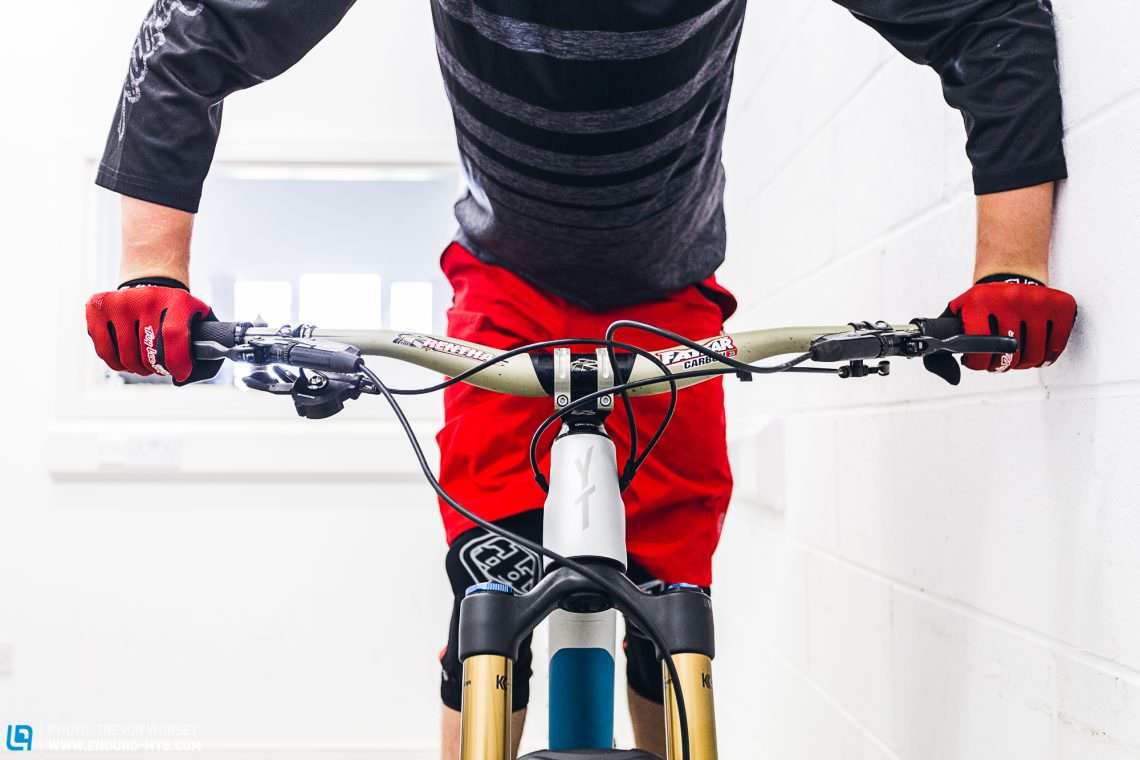
We must mention one last thing, as we see many people falling into this error. When your bike sags into its suspension, often the wheelbase gets longer as the angles change. If you hold both brakes on, the fixed tire contact patches restrict changes in the wheelbase and will reduce the accuracy of your measurements. When measuring sag, make sure you only hold one brake.
Conclusion
When it comes to setting rear shock sag, you should use manufacturers recommendations (or 25-30%) as a starting point, and then adjust your suspension so it is optimised for you. It doesn’t matter if you stand up or sit down when measuring rear shock sag, however, it’s essential that you always perform the measurement the same way as percentage sag differs considerably from sitting to standing.
Did you enjoy this article? If so, we would be stoked if you decide to support us with a monthly contribution. By becoming a supporter of ENDURO, you will help secure a sustainable future for high-quality mountain bike journalism. Click here to learn more.
Words & Photos:









